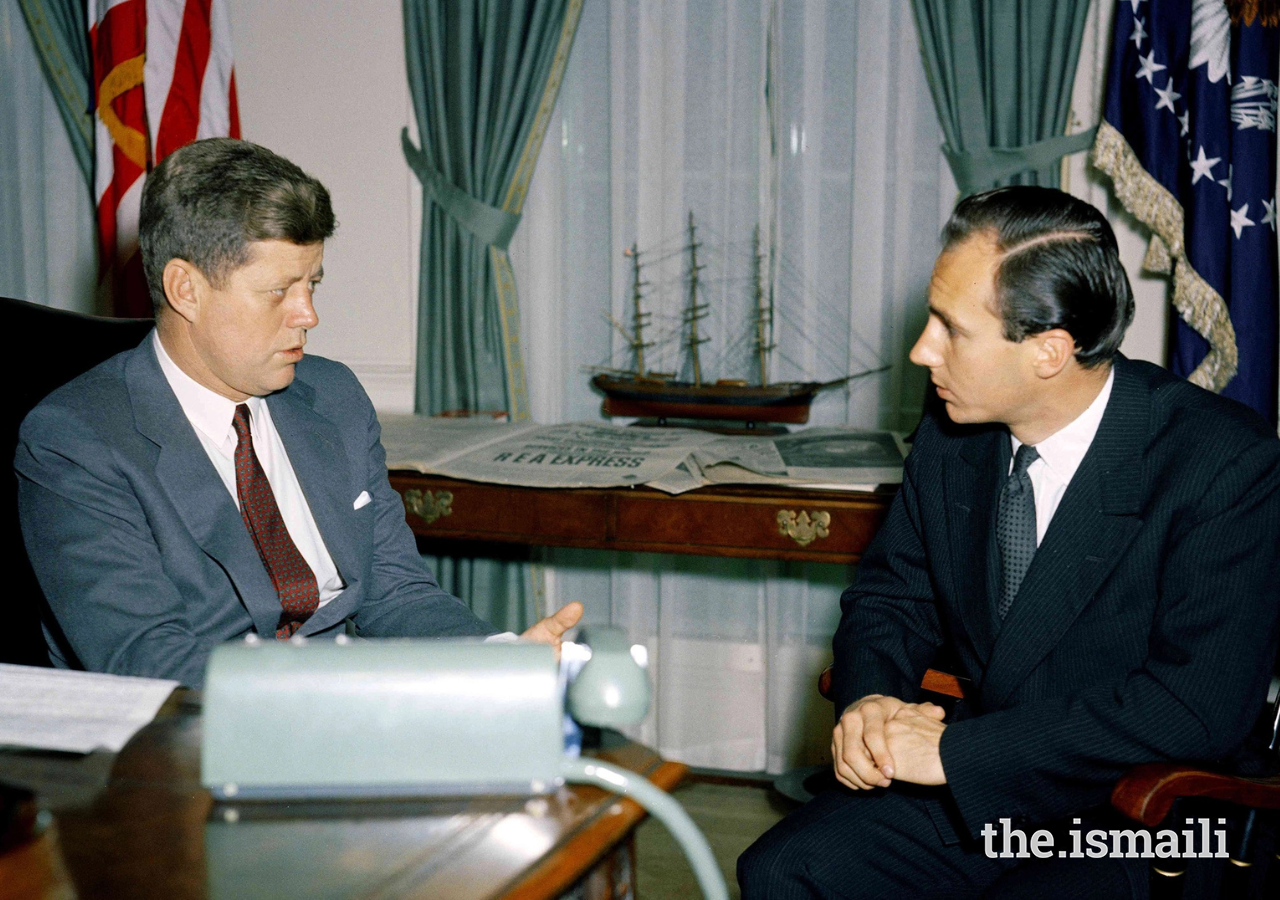In 1957, Prince Karim Aga Khan, then a 20-year-old student at Harvard, became the Imam-of-the-Time when his grandfather, Mawlana Sultan Mahomed Shah passed away. Upon his accession, Mawlana Hazar Imam committed to do everything possible for the Jamat’s worldly and spiritual upliftment. He spent his first year as Imam visiting Jamats around the world. In this same year, Her Majesty Queen Elizabeth II conferred on him the title of His Highness.
Over the course of 1957 and 1958, ceremonies to mark the Takht Nashini — ascension to the office of Imamat — were held in Dar-es-Salaam, Nairobi, Kampala, Karachi, Bombay, and Dhaka. This was an opportunity for the Jamat to pledge its baiyat, offering love, loyalty, and devotion to the newly designated Imam-of-the-Time. After completing the Takht-Nashini ceremonies, Hazar Imam returned to Harvard to complete his undergraduate degree in Islamic History, demonstrating the great importance he places on education.
As a young Imam, Mawlana Hazar Imam witnessed a period of significant political upheaval and instability which had a direct impact on the Jamat. Countries in Africa and Asia were struggling to become independent from colonial rule or were adjusting to their newfound independence; at the same time, the ideological conflict between the Soviet Union and the United States, known as the Cold War, shaped the global geopolitical landscape.
The Jamat in Central Asia was particularly affected by Soviet rule, as the Tajik Jamat was isolated from the Imamat and other Jamats in the region. The Cold War also brought noteworthy technological advancement as part of the “Space Race” between the world’s two rival superpowers.
Despite this global turmoil and change, Hazar Imam’s guidance gave the Jamat courage and faith to overcome adversity, and to emerge into a new world order with strength and confidence. His focus on education enabled the Jamat to begin looking ahead and planning for the futures of their children and grandchildren.
From the very beginning, Hazar Imam built upon the work of his late grandfather, by consolidating and establishing new, contemporary institutions to improve the quality of life of his murids and the communities in which they live. He inaugurated schools and educational institutions in East Africa and Pakistan, established scholarship programmes at Harvard for Muslim students, and created the Aga Khan Chair of Islamic Studies at the American University in Beirut. In early 1963, Hazar Imam also created the East African Industrial Promotion Services to encourage and expand the role of private enterprise in the developing world. In 1967, he established the Aga Khan Foundation, the first agency of what would become the Aga Khan Development Network. This was a significant step towards enhancing synergy among the various development activities of the Imamat under a single institutional structure. Throughout, the work of the Imamat was supported by the Jamat, who offered their resources, both material and of time and knowledge.
At the same time, Mawlana Hazar Imam continued to remind the Jamat about the necessity of maintaining a balance between din and dunya — faith and world — both of which are inextricably linked. This is a key teaching he continued to highlight throughout the following decade, which was marked with political instability across many parts of the developing world.










